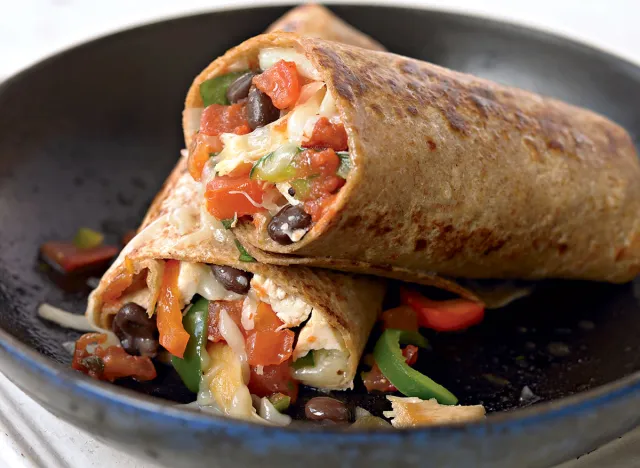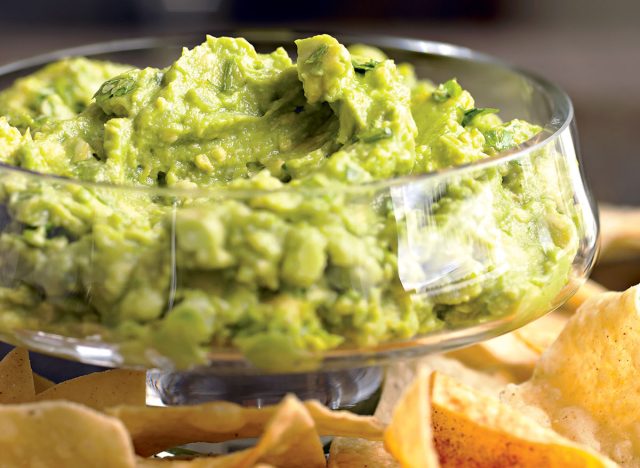A Day of Nutritious Eating Within 1,500 Calories: What It Looks Like
Everyone’s calorie needs vary depending on individual goals, such as weight loss, maintenance or muscle gain. Understanding your health and weight goals is the first step in determining your daily calorie intake.
For example, if you have a weight loss goal, your caloric needs will be different than if your goals are sports performance and muscle gain. Once you’ve decided how you want food to affect your weight, health and performance, you can start determining your energy needs.
For those focused on weight control, a 1,500-calorie meal plan can be an effective tool. Created by registered dietitians, this plan emphasizes nutrient-dense foods that support a calorie deficit to help you achieve your goals without sacrificing nutrition.
Who is a 1500 calorie diet safe for?
A 1,500 calorie diet can work for a wide range of people. For example, someone who already requires a relatively low calorie intake to maintain weight or adult women who are moderately active and aiming for weight loss or maintenance.
However, for most adult men or very active individuals, 1,500 calories does not support their needs, even if weight loss is their goal. While a calorie deficit is helpful for weight loss, too large a deficit can lead to muscle loss, fatigue, and a weakened immune system. Before deciding whether 1,500 calories is right for your goals, check with your doctor or dietitian to make sure you’re meeting your physiological needs.
FAMILY: Why your calories need to change with age—and what to do about it
How to determine a safe calorie deficit for weight loss
If weight loss is your goal, it’s important to build a safe calorie deficit—eating fewer calories than you burn. For example, if you burn 2,000 calories per day, including all activity and exercise, you can aim for a calorie intake of 1,500 to encourage weight loss.
A common approach is to aim for a deficit of 500 calories per day, which translates to about 1 pound of weight loss per week. But everyone’s metabolism is different, and the rate of weight loss can vary.
Creating a smaller deficit in your diet, say around 200 calories daily, can also result in weight loss, although it will likely happen at a slower rate than the 500 calorie deficit. On the other hand, eating at a larger calorie deficit significantly above 500 can result in faster weight loss, although it can compromise your energy, muscle and immunity. An excessive caloric deficit is not recommended for these reasons.
FAMILY: Can the 1,200-Calorie Diet Hurt Your Weight Loss?
Read on to explore what a nutritious 1,500 calorie day looks like, with balanced meals and snacks designed to help you achieve your weight management goals.
Breakfast
Try breakfast: Vegetarian Black Bean Omelet (330 calories)
This recipe provides a balanced meal with quick and easy preparation. You get plenty of protein from the eggs, cheese, and black beans in this recipe. This will help with fullness and also support your muscle tissue. The black beans in this recipe provide a hefty dose of fiber, which also contributes to satiety and helps with digestive regularity. Top with avocado and pico de gallo for a boost of nutrients and flavor.
Other breakfast ideas:
- Easy Turkey-Sweet Potato Breakfast Hash (422 calories)
- Oatmeal with peanut butter and banana (320 calories)
- Yoghurt Parfait (330 calories)
FAMILY: 38 protein-rich breakfasts that will keep you full
Morning talk
Examples of snacks: Dark Chocolate Banana Nut Smoothie (229 calories)
Smoothies are a great way to pack lots of nutrient-dense ingredients into a single container. Even better, they require little time to prepare. The combination of ingredients in this smoothie makes it high in protein, loaded with healthy fats and a filling snack with 7 grams of fiber. It’s also plant-based, making it work for those following a plant-based diet or limiting their dairy intake.
FAMILY: 25 Best Ever Smoothies for Weight Loss
Lunch
Example of lunch: Chicken Fajita Burrito (355 calories)
While a burrito can be high in carbs, this option uses a 10-inch whole-wheat tortilla that provides a reasonable amount of carbs with plenty of filling fiber. You also get filling protein from the chicken and a boost of fiber and nutrients from the onions, peppers and beans. Enjoy with your favorite hot sauce for a flavorful meal that fits into your 1,500 calorie meal plan.
Other lunch ideas:
- Caprese Sandwich (300 calories)
- Slow Cooker Pumpkin Chicken Chili (282 calories)
- Chipotle Shrimp Quesadilla (340 calories)
FAMILY: 80 Healthy Lunch Ideas for Weight Loss
Afternoon talk
Examples of snacks: Guacamole (190 calories)
Avocado is a great source of fiber and healthy fats, and its mild flavor allows it to be combined with other ingredients to create this flavorful dip. Combine your guac with raw vegetables, like carrots, celery, jicama, and cherry tomatoes for a nutritious snack that’s easy to make and loved by many. If you have a few calories left over in your meal plan, add some tortilla chips for a classic, crunchy snack.
Dinner
Example of dinner: Grilled Caesar Salad (410 calories)
Salads can be loaded with nutrients and provide a large volume of food for a reasonable number of calories. While traditional Caesar dressing is loaded with fat and can add hundreds of calories to your salad, this homemade alternative packs familiar flavors for fewer calories. The grilled chicken adds lean protein, and you get plenty of fiber and nutrients from the romaine lettuce base. Swap your chicken for shrimp to change up the flavors and add some spinach for even more nutrients.
Other dinner ideas:
- Sweet and spicy ground beef (300 calories)
- Thai Chicken Curry (340 calories)
- Turkey Meatloaf with Spicy Tomato Glaze (290 calories)
Total calories: 1,514
Vegetarian Black Bean Omelette (330 calories) + Dark Chocolate Banana Nut Smoothie (229 calories) + Chicken Fajita Burrito (355 calories) + Guacamole (190 calories) + Grilled Caesar Salad (410 calories) = 1,514
Final thoughts
A 1,500 calorie diet can be loaded with delicious food while working towards your wellness and weight goals. While it may not be the right calorie amount for everyone, there is a wide range of people who can healthily eat a 1,500 calorie diet. Before starting any new diet, check with your doctor or a registered dietitian to ensure that your energy and health needs are adequately met.
A balanced diet is one that provides enough protein, carbohydrates, fat and fiber and a variety of vitamins and minerals. Regardless of your calorie intake, a balanced, nutritious diet should be a priority.
FAMILY: 14 “Diet” Foods That Are Actually Unhealthy For You
The post What a nutrient dense day with 1,500 calories looks like appeared first on.





